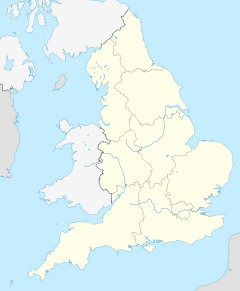Leyland (Lancashire)
| Leyland | ||
|---|---|---|
| Ambrosius Church | ||
| Coordinates | 53 ° 42 ′ N , 2 ° 42 ′ W | |
| OS National Grid | SD549232 | |
|
|
||
| Residents | 35,578 (as of 2011) | |
| administration | ||
| Post town | LEYLAND | |
| ZIP code section | PR25, PR26 | |
| prefix | 01772 | |
| Part of the country | England | |
| region | North West England | |
| Shire county | Lancashire | |
| District | South Ribble | |
| British Parliament | South Ribble | |
Leyland ( ˈleɪ'lənd ) is a small town (Town) in the English county of Lancashire .
history
Leyland is mentioned in the Domesday Book of 1085. The so-called Leyland stone cross is much older and should indicate Saxon settlers. The Andreas Church was built around 1200.
The place was given special importance by the company Leyland Motors , which plays an eminently important role in the history of the British motor vehicle industry. However, the headquarters and the factory are in the neighboring village of Farington . Most of the residential development dates from the 1970s.
traffic
The M6 runs through the municipality in the east . The station is on the West Coast Main Line .
Attractions
- Andreaskirche (St Andrew's Church), originally from around 1200, additions in the 14th century and later
- Ambrosiuskirche (St Ambrose's Church), built between 1884 and 1885
- Jakobskirche (St James' Church), built between 1854 and 1855
- Worden Old Hall, half-timbered mansion, built around 1620, numerous additions worth seeing
- Peacock Hall, built in 1626
- Dunkirk Hall, built in 1628
Web links
Commons : Leyland, Lancashire - collection of images, videos and audio files


